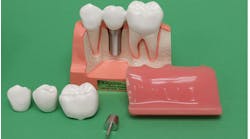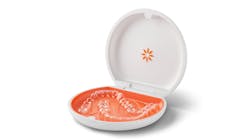We saw a slow return to normal during the summer, including trips to the dentist. However, very few people’s first big hurrah when things reopened was to go to the dentist’s office. How does dentistry compete with travel, pool parties, and all the other fun things that people couldn’t do last summer? It’s time to encourage patients to prioritize their visits to the dentist, and that was a tricky task even before the pandemic. However, the solution to enticing your patients back to your practice may already be in your office: digital technology.
Technology as a marketing tool
With COVID-19 variants still casting a pall over many states’ reopening efforts, and vaccination rates spotty from region to region, many people are seeking efficient care with limited contact. That’s why letting your patients know how your digital technology makes their visits easier, faster, and more comfortable can make returning to the office more appealing to them. An intraoral scanner not only eliminates that gag-inducing tray but saves time for both patients and staff. A premium CBCT system such as the CS 9600 (Carestream Dental) can reduce chairtime by capturing vertical bitewings and getting patients out the door and on their way quickly. Marketing your advanced digital technology reassures patients that you have their safety and comfort in mind.
Plus, digital technology that takes someone from first scan to treatment faster resonates with those who have become accustomed to digital conveniences during their year at home. (Think virtual meetings and grocery delivery.) In fact, a 2019 survey found that two out three patients would consider switching dentists if they thought another practice were using more advanced technology.1 If you’re not letting your patients know how you’ve invested in their care and comfort, you risk losing them to a doctor who is.
Technology as an educational tool
It will take more than marketing your digital technology to keep patients; we were doing that before the pandemic. It will also take educating patients about that technology. The same survey found that a quarter of adults who feel anxious about going to the dentist say the reason is the equipment.1 Even before the shutdown, people easily found excuses not to visit the dentist. So, you and your team will play an important role in educating patients about just how far digital dental technology has come to make their visits faster, more comfortable, and safer.
Start by arming your team with educational materials or a script about the technology as they walk patients through their exams. Carestream Dental launched a patient education campaign called the Digital Dentistry Difference that provides free patient-facing materials for doctors looking for turnkey ways to bring education to their practices.2 When a patient says, “I’ve never had an exam like that before!” the team can feed off their enthusiasm. That’s the benefit of educating patients about your technology: when they understand how you’ve invested in their care, the team and doctor become heroes, protecting patients from discomfort, and getting them back to their day quickly.
By marketing your digital technology and educating patients about why it makes their visits faster, more comfortable, and safer, you give them one less thing to worry about when they visit the dentist. That’s the difference digital dentistry can make.
Editor's note: This article appeared in the September 2021 print edition of Dental Economics.
References
1. Digital Dentistry Difference social media tool kit. Carestream Dental. https://www.carestreamdental.com/globalassets/microsites/digital-dentistry/assets/digital-dentistry-difference-social-media-kit.pdf
2. The Need for Digital Dentistry Education. Carestream Dental. https://www.carestreamdental.com/globalassets/microsites/digital-dentistry/assets/the-need-for-digital-dentistry-education.pdf
David A. Little, DDS, received his doctorate degree in dentistry at the UT Health San Antonio School of Dentistry where he holds an adjunct clinical professor position. Dr. Little maintains a multidisciplinary, state-of-the-art dental practice in San Antonio, Texas. An accomplished national and international speaker, professor, and author, he also serves the dental profession as a clinical researcher focusing on surgical placement and restoration of dental implants. As a professional consultant, he shares his expertise on emerging technologies including CBCT, planning software, surgical guides, digital workflow, and restorative techniques with industry peers.






